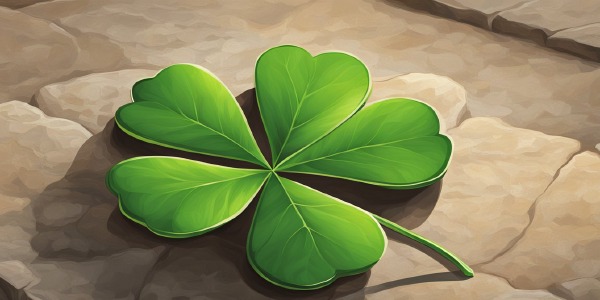Why Do We Make Special Jokes on April Fool's Day? Unwrapping the Tradition of Laughter
April Fools’ Day, celebrated on the 1st of April, is a day known for its lighthearted jests and the playing of pranks.
The tradition of setting aside a day for playful deceit finds its roots deeply woven into history with various explanations as to how it originated.
Today, from simple jokes to elaborate hoaxes, this day offers a unique opportunity for individuals and organizations to showcase their creativity and sense of humor.

The allure of April Fools’ Day lies in the psychological joy of surprise and the pleasure derived from harmless fun.
People engage in crafting pranks that evoke laughter and amusement, striving to maintain a balance between humor and sensitivity.
The evolution of media has further propelled the reach of April Fools' pranks, allowing for elaborate hoaxes that can catch a global audience off-guard, all in the name of good fun.
Key Takeaways
- April Fools’ Day is a celebration of humor and pranks on the 1st of April.
- The joy of April Fools’ stems from surprise and the cultural tradition of harmless fun.
- Media evolution has broadened the scope and impact of April Fools' pranks.
Origins and History of April Fools’ Day

You often revel in the playfulness of April Fools’ Day, but you might wonder how this tradition started. Here’s a glimpse into its rich history, illustrating how calendar changes and ancient celebrations have influenced the whimsical shenanigans you enjoy today.
Ancient Celebrations
Ancient Rome: Long before April Fools’ Day as you know it, the Romans celebrated Hilaria, a festival on March 25, rejoicing in the vernal equinox with jubilant games and amusements.
Historical Shifts in New Year’s Day
In medieval times, New Year’s Day was not always on January 1.
Much of Europe celebrated the New Year during the vernal equinox or at the end of March, coinciding with the start of spring.
With the adoption of the Gregorian calendar over the older Julian calendar, there was a significant shift. The start of the year moved from springtime festivities to the dead of winter.
First Documented Observances
The history of April Fools’ Day is often traced back to the 16th century.
At that time, the interchanging of the new year led to confusion and was an opportunity for jest.
The first documented observances of April Fools’ traditions were recorded in France, where those sticking to the old New Year’s date — April 1 — were playfully mocked.
Edict of Roussillon and Calendar Reform
In 1564, the Edict of Roussillon was decreed by Charles IX of France, officially designating January 1 as the start of the year.
Resistance to this change perpetuated the custom of trickery on April 1, reinforcing the practice as an annual celebration and embedding it in European cultural history.
April Fools’ Day Celebrations Around the World

April Fools’ Day, on April 1st, is celebrated worldwide with various unique and playful traditions. As you explore these international customs, you’ll notice how they differ yet share a spirit of jest.
France - Poisson d’Avril
France calls it “Poisson d’Avril,” or April Fish.
Children in France stick paper fish onto the backs of their unsuspecting friends, shouting “Poisson d’Avril” once the prank is discovered.
This practice is said to symbolize a young, easily caught fish, thus, a gullible person.
Scotland’s Two-Day Festivity
In Scotland, April Fools’ Day extends to a two-day event.
The first day is dedicated to general pranks, where the fool is called a “gowk”— a cuckoo, which symbolizes a foolish person.
The second day, named “Taily Day,” involves pranks targeting the posterior, where you may trick someone into trying to spot the nonexistent “tail.”
Traditions in Other Countries
Other countries have their own April Fools’ twists:
- Ireland: Unexpected invitations are sent out, leading recipients on what’s known as a “fool’s errand.”
- England: In England, pranking is also a common practice on April 1st. However, the unwritten rule is that the pranks are only supposed to be played until midday. Anyone who plays a joke after midday is considered the “April Fool” themselves.
- Brazil: Known as “Dia da Mentira” (Day of the Lie), similar to other countries, pranks are the order of the day.
- Italy: The saying goes “pesce d’aprile” (April fish), much like France, where jokes are played, and fish play a symbolic role.
The Psychology of Pranks and Jokes

Pranks and jokes tap into your cognitive and emotional responses to humor, balancing playfulness and potential sensitivity.
Humor and the Human Mind
Engaging with humor triggers a specific set of responses in your brain.
When you encounter a joke or prank, your cognitive faculties are set to work; you first process and understand the humor intellectually and then react emotionally.
This emotional reaction is often joy and amusement, eliciting laughter or a smile.
A successful prank hinges on this dynamic, creating a moment in which everyone involved can share a laugh.
However, the nature of a joke or prank also requires a willing participant who is temporarily misled or tricked.
When the prankster executes a practical joke, the aim is not genuine deceit but a light-hearted deception that leads to mutual funny enjoyment.
The victim—or more aptly, a good-natured participant—often feels a bond of trust through shared laughter, especially when they are able to see the humor in their momentary gullibility.
The Fine Line Between Fun and Harm
When crafting a prank, you must consider the fine line between fun and potential distress.
A successful practical joke encourages laughter and a sense of play, enhancing social connections.
Those involved, including the prankster and the victim, usually end up sharing in the resulting joy.
However, it is crucial for a prank to respect boundaries and avoid causing genuine harm.
A sensitive prankster will carefully consider their target’s feelings and limitations.
If a prank crosses over into causing discomfort or embarrassment, it can damage trust and negatively impact the relationship.
Therefore, maintaining an awareness of this balance is key to a successful April Fools’ Day experience.
Iconic April Fools’ Day Hoaxes

Iconic April Fools’ Day hoaxes have played a significant role in shaping the jovial spirit of the day. They often involve media outlets and have left notable marks in history.
Media Involvement in Pranks
The media, including TV stations, radio, newspapers, and websites, have orchestrated some of the most memorable April Fools' Day hoaxes.
For instance, the BBC once convinced you that spaghetti grew on trees.
On April 1, 1957, the reputable broadcasting corporation aired a report about Swiss farmers enjoying a plentiful spaghetti harvest, sparking wonder and amusement.
- BBC: Spaghetti Tree Hoax (1957)
- Convinced the world that spaghetti grew on trees
- NPR: Richard Nixon’s Comeback (1992)
- Joked that Nixon was running for president again with the slogan “I didn’t do anything wrong, and I won’t do it again.”
Notable Hoaxes in History
Throughout history, numerous April Fools’ hoaxes stand out for their creativity and impact.
In 1698, you might have been one of the people tricked into going to the Tower of London to see the “washing of the lions,” an event that never existed.
Fast-forwarding to more modern times:
- Taco Bell: Liberty Bell Purchase (1996)
- Claimed to have bought the Liberty Bell and renamed it the “Taco Liberty Bell.”
- Burger King: Left-Handed Whopper (1998)
- Advertised a burger designed for left-handed customers, sparking curiosity.
- Google: Frequent Prankster
- Known for its annual April Fools’ jokes, ranging from fake announcements to playful tweaks in their services.
Modern Day Celebrations and the Role of Digital Media

In today’s April Fools’ day celebrations, you’ll notice how digital media plays a central role in spreading humor and tricks. Corporations and individuals alike use online platforms to share their pranks.
Social Media and Viral Jokes
On April Fools’ day, your social media feeds are likely to be flooded with practical jokes and humorous content going viral.
Friends and family members may share fake news, phony life updates, or clever memes with the intention of getting a good-natured laugh.
Content that resonates with a wider audience can become viral, making the rounds beyond the original social circle and sometimes even making headlines if it’s especially impactful or funny.
Here’s a brief look at how social media shapes the day:
- Trending Hashtags: Tools like hashtags allow you to quickly find all the jokes related to April Fools’ day.
- Wide Reach: A joke can spread across the globe in minutes, thanks to the interconnected nature of platforms like Twitter, Facebook, and Instagram.
- Instant Feedback: Users can gauge the success of a joke instantly through likes, shares, and comments.
Corporate Involvement and Brand Pranks
Brands take April Fools’ day as an opportunity to show their playful side and engage with you in a less formal way. The pranks often involve elaborate, fictional products or services and serve as a way to generate buzz and interaction from consumers.
Here’s how corporations typically involve themselves:
- Press Releases: Some companies prepare mock press releases for their fictional products.
- Fake Advertisements: Many create humorous and often high-quality commercials for services that don’t exist.
- Social Media Campaigns: Brands might change their profile pictures, post about new fake policies, or interact with customers in jest.
As digital and social media continue to dominate your everyday life, the tradition of April Fools’ day adapts to these platforms, allowing both individuals and corporations to participate in and enrich this day of pranks and laughter.
The Cultural Impact and Importance of April Fools’ Day

April Fools’ Day has significant cultural resonance, reflecting societal values and enhancing community bonds through shared traditions.
The Holiday as a Reflection of Society
April Fools’ Day allows you to engage with a lighter side of life where mischievous behavior is not just accepted but encouraged.
It’s a day where society momentarily sets aside the standard rules against deception, permitting you to tell harmless lies or play pranks, reinforcing a break from the norm.
Historically, festivals such as the Roman Hilaria or the medieval Feast of Fools underpin the modern holiday. These celebrations provided an outlet for repressing societal tensions and flipping social roles, showcasing how humor and tomfoolery have been ingrained into your cultural fabric.
Maintaining Traditions and Fostering Community
Community bonds are strengthened through shared experiences, and April Fools’ Day embodies this with its universal appeal.
By participating in this holiday, you maintain a tradition that traverses generations, cultures, and borders.
Whether it’s by crafting a clever hoax or falling victim to a lighthearted joke, you become part of a larger narrative that connects you with others.
Mass media often participates, creating elaborate falsehoods that many recognize as part of the day’s traditions.
This shared participation, even at a global scale, nurtures a sense of belonging and cements April Fools’ Day as a communal fixture.




